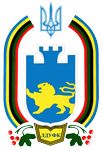Please use this identifier to cite or link to this item:
https://repository.ldufk.edu.ua/handle/34606048/30709| Title: | Post-loading dynamics of beat-to-beat blood pressure variability in highly trained athletes during sympathetic and parasympathetic overstrain formation |
| Authors: | Huzii, Oksana Romanchuk, Аleksandr Mahlovanyi, Anatolii Trach, Volodymyr Гузій, Оксана Романчук, Олександр Магльований, Анатолій Трач, Володимир |
| Keywords: | spiroarteriocardiorhythmography physical load cardiovascular regulation спіроартеріокардіоритмографія фізичне навантаження серцево -судинна регуляціz |
| Issue Date: | 4-Oct-2021 |
| Citation: | Post-loading dynamics of beat-to-beat blood pressure variability in highly trained athletes during sympathetic and parasympathetic overstrain formation / Oksana Huzii, Аleksandr Romanchuk, Anatolii Mahlovanyi, Volodymyr Trach // Journal of Physical Education and Sport. - 2021. - Vol. 21 (5), аrt 350. - Р. 2622 - 2632. (Scopus) |
| Abstract: | Abstract. To determine the changes in beat-to-beat blood pressure variability during the development of the autonomous regulation overstrain in response to the training load.. Using Spiroarteriocardiorhythmography (SACR), 202 highly qualified male athletes, aged 22.6 ± 2.8 years were examined. All studies were carried out in the precompetition period. SACR-examination were carried out three times: in the morning, on an empty stomach, in a sitting position on the day of training (G1), immediately (in the first 5-7 minutes) after training (G2) and the next day in the morning after sleep (G3). The spectral parameters of the variability of systolic (SBPV) and diastolic (DBPV) pressure and their derivatives – baroceptor sensitivity (BR) and indices of heart rate centralization (ICHR), systolic (ICSBP) and diastolic (ICDBP) pressures were determined. 19 athletes were recorded to have overstrain of regulation of the sympathetic (10 athletes) and parasympathetic (9 athletes) types. They formed the observation groups OG1 and OG2, respectively. The control group (CG) consisted of all 202 athletes. It is shown that, overstrain of the sympathetic type in the post-exercise and recovery period is characterized by the following: stable predominance of low-frequency and central influences on the contractile heart function immediately after exercise and the next day after exercise; a pronounced decrease in the activity of influences on the contractile heart function in the high-frequency range immediately after exercise; a steady decrease in baroreceptor sensitivity in the high and low frequency ranges immediately after exercise and the next day after exercise. The following tendencies are characteristic for overstrain of the parasympathetic type in the postexercise and recovery period: stable predominance of high-frequency influences on the contractile heart function immediately after exercise, which increases even more by the next day; a steady decrease in baroreceptor sensitivity immediately after exercise and the next day after exercise in comparison with the initial state. The results obtained significantly supplement the findings of the research obtained in the analysis of HRV. Анотація. Визначити зміну мінливості артеріального тиску між ритмами в процесі розвитку автономного перенапруження регуляції у відповідь на тренувальне навантаження. Використання спіроартеріокардіоритмографії (SACR), 202 Обстежено висококваліфікованих спортсменів -чоловіків у віці 22,6 ± 2,8 років. Усі дослідження проводились у період до змагань. SACR-обстеження проводили тричі: вранці, натщесерце, в а сидяче положення в день тренування (G1), відразу (у перші 5-7 хвилин) після тренування (G2) і наступного день вранці після сну (G3). Спектральні параметри мінливості систолічного (SBPV) та діастолічного (DBPV) тиск та їх похідні - чутливість до барорецепторів (BR) та показники централізації серцевого ритму (ICHR), визначали систолічний (ICSBP) та діастолічний (ICDBP) тиск. Було зареєстровано 19 спортсменів перенапруження регуляції симпатичного (10 спортсменів) та парасимпатичного (9 спортсменів) типів. Вони утворили групи спостереження OG1 та OG2 відповідно. Контрольну групу (КГ) складали всі 202 спортсмени. Це показано що перенапруження симпатичного типу в період після вправ та відновлення характеризується наступне: стабільне переважання низькочастотних і центральних впливів на скорочувальну роботу серця одразу після тренування і на наступний день після тренування; виражене зниження активності впливає на скорочувальна функція серця у високочастотному діапазоні одразу після тренування; постійне зменшення чутливість барорецепторів у діапазонах високих та низьких частот одразу після тренування та на наступний день після вправа. Наступні тенденції характерні для перенапруження парасимпатичного типу в період після навантаження та відновлення: стабільне переважання високочастотних впливів на скорочувальну роботу серця відразу після тренування, яке ще більше зростає до наступного дня; постійне зниження барорецепторів чутливість відразу після тренування та на наступний день після тренування в порівнянні з початковим станом. Файл Отримані результати значно доповнюють результати досліджень, отриманих при аналізі ВСР. |
| URI: | http://repository.ldufk.edu.ua/handle/34606048/30709 |
| Appears in Collections: | Наукові праці професорсько-викладацького складу ЛДУФК в базах даних Scopus, WoS, Tomson Reuters |
Files in This Item:
| File | Description | Size | Format | |
|---|---|---|---|---|
| Гузій_Романчук_Магльований_Трач_Скопус_2021.pdf | 453.87 kB | Adobe PDF | View/Open |
Items in DSpace are protected by copyright, with all rights reserved, unless otherwise indicated.
